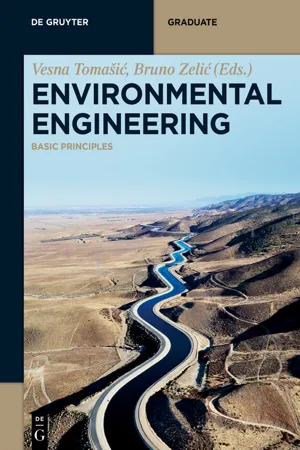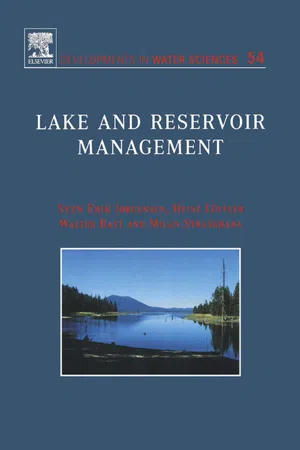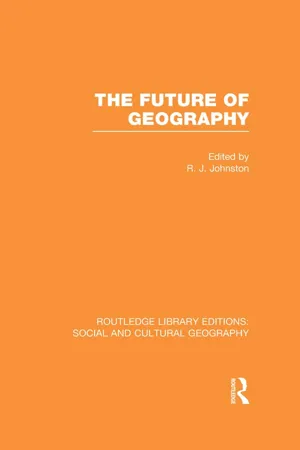Geography
Water Geography
Water geography is the study of the distribution, movement, and physical properties of water on Earth's surface. It encompasses the examination of rivers, lakes, oceans, and other water bodies, as well as the impact of water on shaping landscapes and influencing human activities. This field also explores the interconnectedness of water systems and their significance for ecosystems and human societies.
Written by Perlego with AI-assistance
Related key terms
Related key terms
1 of 4
Related key terms
1 of 3
5 Key excerpts on "Water Geography"
- eBook - ePub
- Cynthia Metcalf, Rhonda Atkinson(Authors)
- 2017(Publication Date)
- Research & Education Association(Publisher)
Human Geography focuses on humans and the cultures they create relative to their space. It encompasses population geography, economics, and political geography and looks at how people’s activities relate to the environment politically, culturally, historically, and socially.Physical Geography addresses Earth’s physical environment: water (hydrosphere ), air (atmosphere ), plants and animals (biosphere ), and land (lithosphere ). Physical geographers study land formation, water, weather, and climate (weather patterns, specifically precipitation and temperature, over time), as well as more specific topics such as geomorphology, biogeography, and environmental geography.Regional Geography organizes areas of Earth that have some degree of similarity and divides the world into different realms .Topical/Systemic Geography is the orderly and methodical study of climate, landforms, economics, and culture.The main focus of geographers, no matter the subfield, is the spatial perspective. For example, population geography deals with the relationships between geography and population patterns, including birth and death rates. Political geography concerns the effect of geography on politics, especially on national boundaries and relations between states. Economic geography focuses on the interaction between Earth’s landscape and the economic activity of the human population.COMPETENCY 1.1Apply the six essential elements of geography. Geographic Education: 18 Standards, 6 ElementsThe National Geography Standards(http://nationalgeographic.org/standards/national-geography-standards/ - eBook - ePub
Greening the College Curriculum
A Guide To Environmental Teaching In The Liberal Arts
- Jonathan Collett, Stephen Karakashian, Jonathan Collett, Stephen Karakashian(Authors)
- 2013(Publication Date)
- Island Press(Publisher)
The approach of geographers to the study of environmental change emphasizes spatial pattern, a large scale of inquiry (over space and time), and the integration of social and natural sciences. Geographers typically conduct research at the level of landscape or region; for example, considering land use patterns and their impact on vegetation in a drainage basin or watershed. Recently, geographers have begun working at much broader scales. Such a study is under way in Mexico, where Liverman (1990) is investigating the capacity of small-scale farmers to cope with climatic change over several decades. Research elsewhere documents local adaptation in land management upon elevated exposure to storms, oil spills, flooding, and other forms of environmental risk (Kates and Burton 1986).While geography as a discipline encompasses a broad realm of inquiry, geographers as individuals tend to specialize in either human or physical studies, often borrowing methods of analysis from other disciplines. Geographers traditionally break the study of human transformation of the biosphere into four fields: (1) regional studies, (2) people—environ-ment studies, (3) environmental processes and resources, and (4) spatial analysis.Regional Studies
Geographers working in this tradition address conservation issues relevant to a particular place. A regional focus allows students to understand how the physical characteristics and social history of a place have led to a unique land use system. Students may draw on this insight to evaluate the sustainability of a land use system and to predict how changing external and internal factors may result in the transformation or degradation of a landscape (Leighly 1969). For example, many Latin Americanist geographers examine how deforestation in the Amazon is driven by distinctive regional characteristics such as land tenure patterns, demographic features, government policies, and agricultural and economic systems (Hecht and Cockburn 1989; Smith 1982).People—Environment Studies
Within this broad focus, geographers explore the relationship between society and nature in terms of causes and consequences. The justification for environmental conservation is likely to vary dramatically according to a society’s own view of its relationship with nature. Ancient writers such as Hippocrates, Ptolemy, and Strabo expressed a profound desire to define the human role in the natural world. Since then, many philosophies have developed, ranging from the Christian doctrine of defining man as master of nature (Glacken 1956) (see Chapter 11, Religion), to Romantic/Arcadian ideas of humanity in harmony with nature (O’Riordan 1981) (see Chapter 7, Literature), to deterministic theories akin to social Darwinism that individual and social characteristics are formed by the physical environment (Semple 1911), to notions that human choice is influenced primarily by cultural and historical factors (Lewthwaite 1966). (These latter viewpoints are discussed fully in Chapter 2, Anthropology.) Accordingly, the aim of conservation will vary in terms of what type of human intervention in ecosystems a given society considers desirable. - eBook - ePub
Environmental Engineering
Basic Principles
- Vesna Tomašić, Bruno Zelić(Authors)
- 2018(Publication Date)
- De Gruyter(Publisher)
Zoran Nakić, Marta Mileusnić, Krešimir Pavlić and Zoran Kovač
5 Environmental geology and hydrology
This article has previously been published in the journal Physical Sciences Reviews. Please cite as: Nakić, Z., Mileusnić, M., Pavlić, K., Kovač, Z. Environmental Geology and Hydrology. Physical Sciences Reviews [Online] 2017, 2 (10). DOI: 10.1515/psr-2016-0119Abstract: Environmental geology is scientific discipline dealing with the interactions between humans and the geologic environment. Many natural hazards, which have great impact on humans and their environment, are caused by geological settings. On the other hand, human activities have great impact on the physical environment, especially in the last decades due to dramatic human population growth. Natural disasters often hit densely populated areas causing tremendous death toll and material damage. Demand for resources enhanced remarkably, as well as waste production. Exploitation of mineral resources deteriorate huge areas of land, produce enormous mine waste and pollute soil, water and air. Environmental geology is a broad discipline and only selected themes will be presented in the following sub-chapters: (1) floods as natural hazard, (2) water as geological resource and (3) the mining and mineral processing as types of human activities dealing with geological materials that affect the environment and human health.Keywords: environmental geology, hydrology, floods, groundwater, mine waste, pollution, human healthEnvironmental geology is scientific discipline dealing with the interactions between humans and the geologic environment. Hence, the impact is mutual. Many natural hazards (e. g. earthquakes, volcanic eruptions, landslides, floods), which have great impact on humans and their environment, are caused by geological settings. On the other hand, human activities have great impact on the physical environment (e. g. contamination of water, soil and air; depletion of mineral resources; imbalance of biogeochemical cycles; climate change; waste production). - eBook - ePub
- S.E. Jorgensen, Heinz Loffler, Walter Rast, Milan Straskraba(Authors)
- 2005(Publication Date)
- Elsevier Science(Publisher)
The water requirements of people vary greatly around the world. Populations are even found inhabiting deserts, semi-arid regions and other localities with limited water resources. At least a limited quantity of water must be available in all such locations, however, either as surface water or groundwater, if people are to survive. The hydrological reality is that where there is no water, there is no life. This applies to all life, plants, animals and humans. Under hot dry conditions, humans will survive only few days without drinking water, and the same would be true even at the seacoast, which is characterized by access to large quantities of water, but of high salinity, rendering it unfit for human consumption.Throughout history, ancient civilizations flourished, particularly on or near lakes, which provided water for drinking, cooking, cultivation of plants and domestic animals, washing of clothes, a medium for transportation, and sometimes even a hydrological barrier that protected them from their enemies.At the community and national scales, the cultural importance of water is reflected in the basic human need for it. Most large cities and, indeed, the majority of human settlements around the world, lie in close proximity to water resources. Almost all the large cities of the world lie within 100–200 km of rivers, lakes and seas. The cultural importance of waterbodies extends to the demarcation of boundaries, ranging from the most elementary moats surrounding European castles to the most elegantly negotiated international boundaries between countries. In such situations, waterbodies assume the role of protector, isolating the community from its potentially-hostile neighbors. Indeed, the construction of protective moats is one of the earliest uses of water diversionary structures. At this scale, waterbodies often have a role as landscape features, exclusive of their other societal roles (drinking water supply, irrigation and industrial water source, recreational resource, transportation corridor, etc.). - Ron Johnston(Author)
- 2014(Publication Date)
- Routledge(Publisher)
Ironically, as the number of professional geographers has increased, so communication between specialisms has diminished, and communication across the discipline of geography has almost ceased. National conferences are held but significant numbers of one specialism or another don't attend, claiming that general geography meetings have little to offer specialists. Geography is not of course unique. In most disciplines, the scientific explosion of the past forty years has stimulated increased specialization and the breakdown of traditional bounds. Healthy crossbreeding has promoted vigorous new avenues of enquiry, for example in biochemistry and geophysics. But for geography specialization is a mixed blessing because, while new studies can be pursued along narrower deeper lines, the traditional fabric of geography begins to crumble. In many countries, geography has reached a crossroads and to survive as a discipline it needs leadership from broadly based specialists who are committed to the kinds of synthesis and integration that the subject can offer so well. In the USA in particular, where geography has gained only grudging acceptance as an academic discipline and is frequently met with bemused tolerance or even ignorance beyond academia, physical and human geographers must pull together in the common cause.Some geographers see no common cause, only diverging paths. For example, whenever physical geography is broken into discrete parts, some geographers and other scientists assume that geomorphology is really part of geology and thus best left to geologists, and that climatology is part of the atmospheric sciences best left to meteorologists. Nothing could be more wrong. Many roads lead to Rome and several different approaches are necessary for the growth of knowledge. Furthermore, we cannot assume that scientists in other fields will do a better job or indeed do the job at all. Like geographers, geologists and meteorologists have their own perceptions of their fields, perceptions that change from time to time. For example, many geology departments in US universities have never taught geomorphology while others have long since dropped the subject from their curriculum. Others saw fit to reintroduce the subject at about the time that society generally and government agencies in particular were becoming aware, belatedly, of environmental problems in the late 1960s. In the realm of geomorphology, the physical geographer has as much right as the environmental geologist to practice a trade and bring to the work a carefully nurtured understanding of the multivariate character of nature. In Britain, where geologists for so long focused on hard rocks, geomorphology has long been the province of physical geographers, often dominating geography as a whole in the 1950s and 1960s. Over the past twenty-five years, however, geographers of the British Geomorphological Research Group have incorporated sedimentologists, hydrologists, oceanographers, and others, a most natural and wise move for effective geomorphic communication but a move that has shifted many geomorphologists away from their parent geography. Human geographers, for some obscure reason the self-appointed guardians of the faith, have in turn questioned whether physical geography should be maintained within geography.
Index pages curate the most relevant extracts from our library of academic textbooks. They’ve been created using an in-house natural language model (NLM), each adding context and meaning to key research topics.
Explore more topic indexes
Explore more topic indexes
1 of 6
Explore more topic indexes
1 of 4




